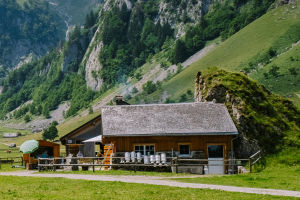Azores
The westernmost point of the European continent is Cape Roca in Portugal; however, Cape Roca is not the westernmost point of Europe, but rather the Azores, which also belong to Portugal.
The Azores, officially known as the Autonomous Region of the Azores, is located in the North Atlantic Ocean, 1,300 kilometres (1,600 miles) from Europe and 1,900 kilometres from the American continent.
It is a Portuguese territory that is a one-time zone away from the Portuguese mainland. The only two other places on the planet that use the same time as the Azores are Cape Verde and the eastern part of Greenland. Until 2015, when Ryanair, Vueling, and other low-cost airlines opened the Azores route, very few tourists visited the islands.
The opening of new routes put it on the travel pages of the European and American media in 2016, with Lonely Planet describing the Azores as "another Garden of Eden," the Daily Telegraph calling it "Europe's answer to Hawaii," and USA Today saying it was "the Atlantic's best-kept secret." From the forgotten corner of Europe, Portugal, it is another 1,400 miles west.
Specifically, the island chain is located between a quarter of the European continent and a quarter of the North American continent. Even between the nine islands, there is still no short distance, spanning about 650 kilometres of the ocean from east to west. From the sky, each island appears to float alone in the Atlantic Ocean.
It is difficult for historians to say who was the first to visit this place in person. Portuguese navigators recorded the Azores in the 15th century, but they did not make many stops and used it as a supply station.
In 1493, when Columbus returned to Europe from the New World, he filled up the last space in the Spanish galleys on Santa Maria Island in the Azores and returned to Spain as a victor.
Even though it was named the world's number one island to visit by National Geographic magazine, it has remained a relic of its geographical isolation and has not been broken down by the tourist boom.
During prime tourist seasons like July and August, the island is also mostly visited by tourists from Portugal or Spain, as well as many Portuguese descendants from the United States or Brazil, whose ancestors fled from the island and now come back to trace their roots.
The Portuguese occupied the land since the 15th century, but until the 1980s, the Azores was one of the most backward regions in Europe.
The U.S. ambassador to Portugal wrote in his journal, "It's as if we're stuck in the 19th century. Time slows down here; fishmongers still carry buckets of water on stretchers; women wash their clothes in the common areas and then dry them on the branches; cows and sheep and horse-drawn carts roam the streets ......"
The importance of the Azores is reflected in the European "discovery of the New World". To travel west from Europe by ship, it was necessary to cross the vast Atlantic Ocean, which was not possible without supplies.
The Azores were stuck in the eastern part of the world between Europe and North America, and the distance between the islands and Portugal was equivalent to one-third of the entire European and American sailing distance. Ships from Europe would rest here for supplies and then advance towards the "New World".


